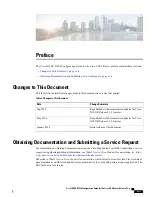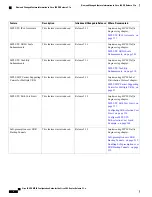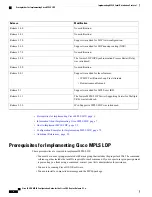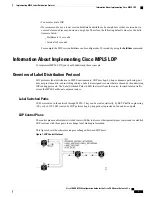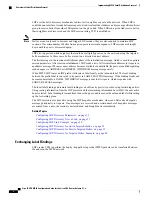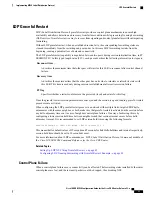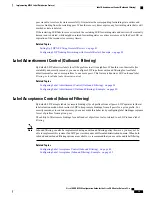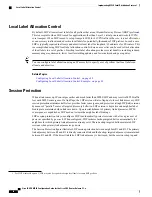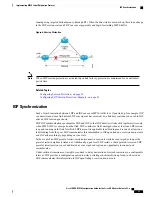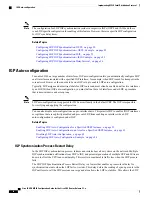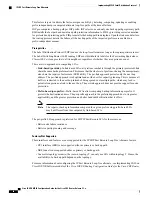
C H A P T E R
2
Implementing MPLS Label Distribution Protocol
The Multiprotocol Label Switching (MPLS) is a standards-based solution driven by the Internet Engineering
Task Force (IETF) that was devised to convert the Internet and IP backbones from best-effort networks into
business-class transport mediums.
MPLS, with its label switching capabilities, eliminates the need for an IP route look-up and creates a virtual
circuit (VC) switching function, allowing enterprises the same performance on their IP-based network services
as with those delivered over traditional networks such as Frame Relay or ATM.
Label Distribution Protocol (LDP) performs label distribution in MPLS environments. LDP provides the
following capabilities:
•
LDP performs hop-by-hop or dynamic path setup; it does not provide end-to-end switching services.
•
LDP assigns labels to routes using the underlying Interior Gateway Protocols (IGP) routing protocols.
•
LDP provides constraint-based routing using LDP extensions for traffic engineering.
Finally, LDP is deployed in the core of the network and is one of the key protocols used in MPLS-based
Layer 2 and Layer 3 virtual private networks (VPNs).
Feature History for Implementing MPLS LDP
Modification
Release
This feature was introduced.
Release 2.0
No modification.
Release 3.0
Support was added for conceptual and configuration information
about LDP label advertisement control (Outbound label filtering).
Release 3.2
Support was added for these features:
•
Inbound Label Filtering
•
Local Label Allocation Control
•
Session Protection
•
LDP-IGP Synchronization
Release 3.3.0
Cisco IOS XR MPLS Configuration Guide for the Cisco CRS Router, Release 5.1.x
5









